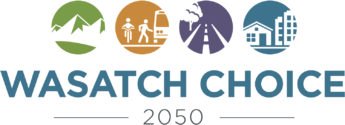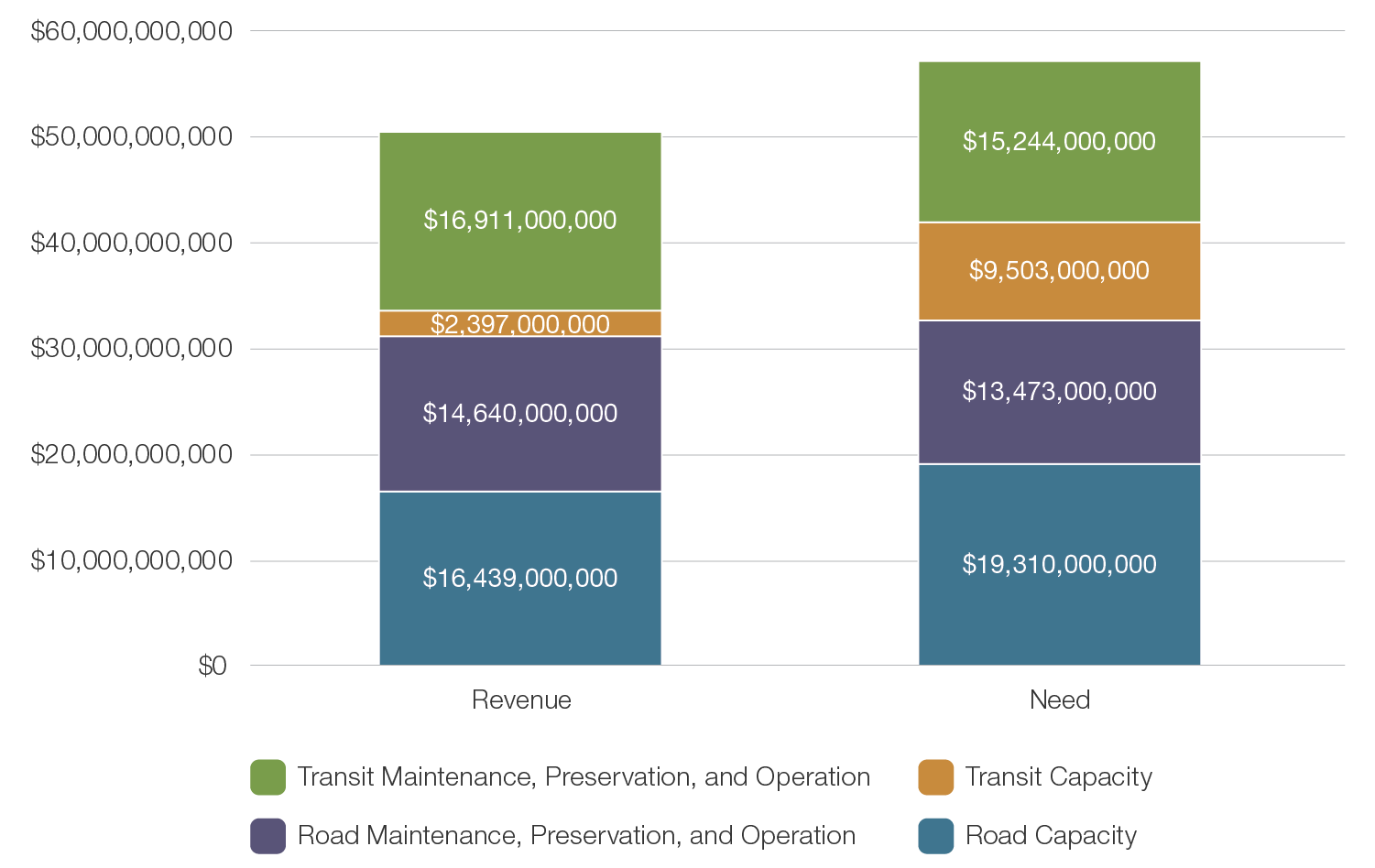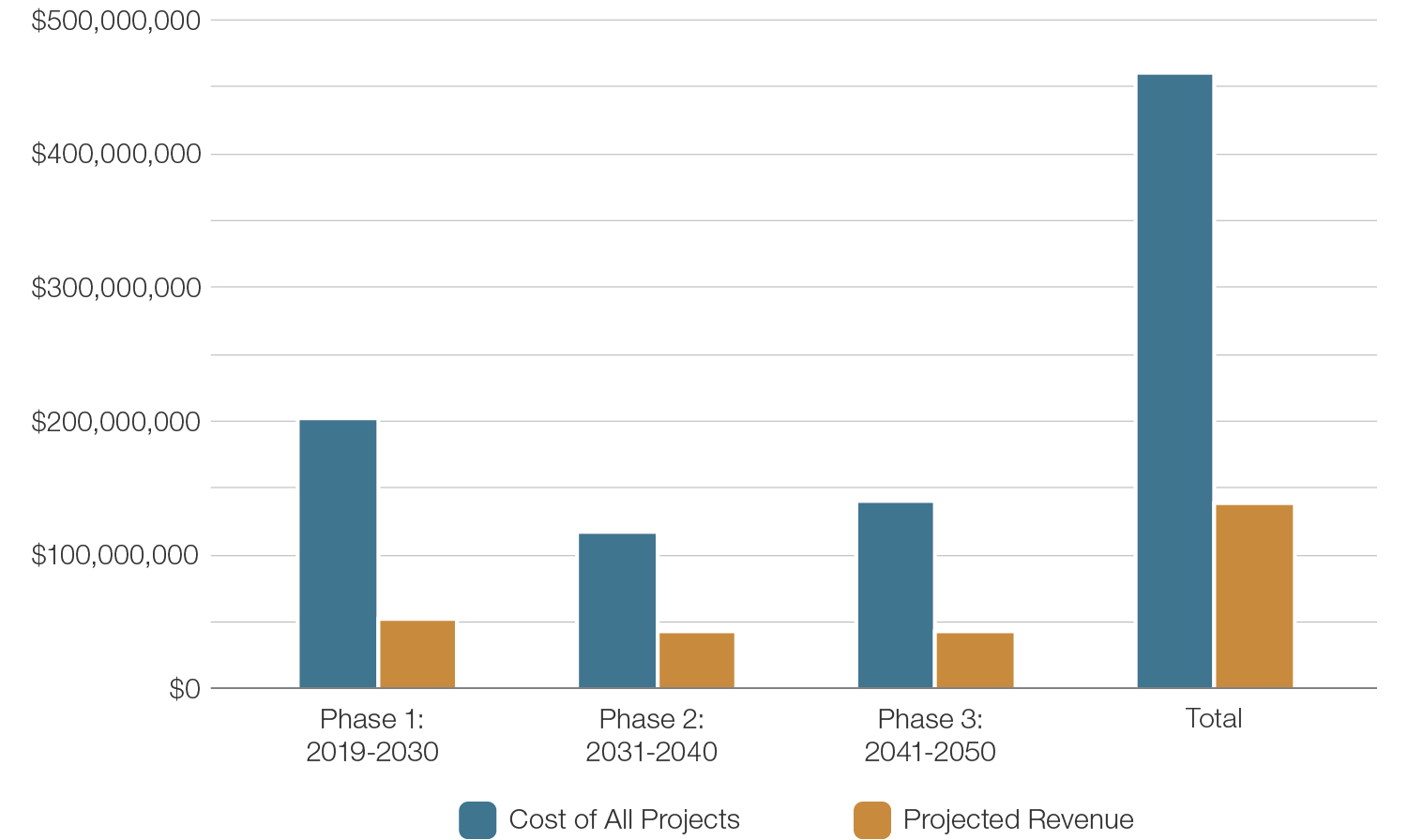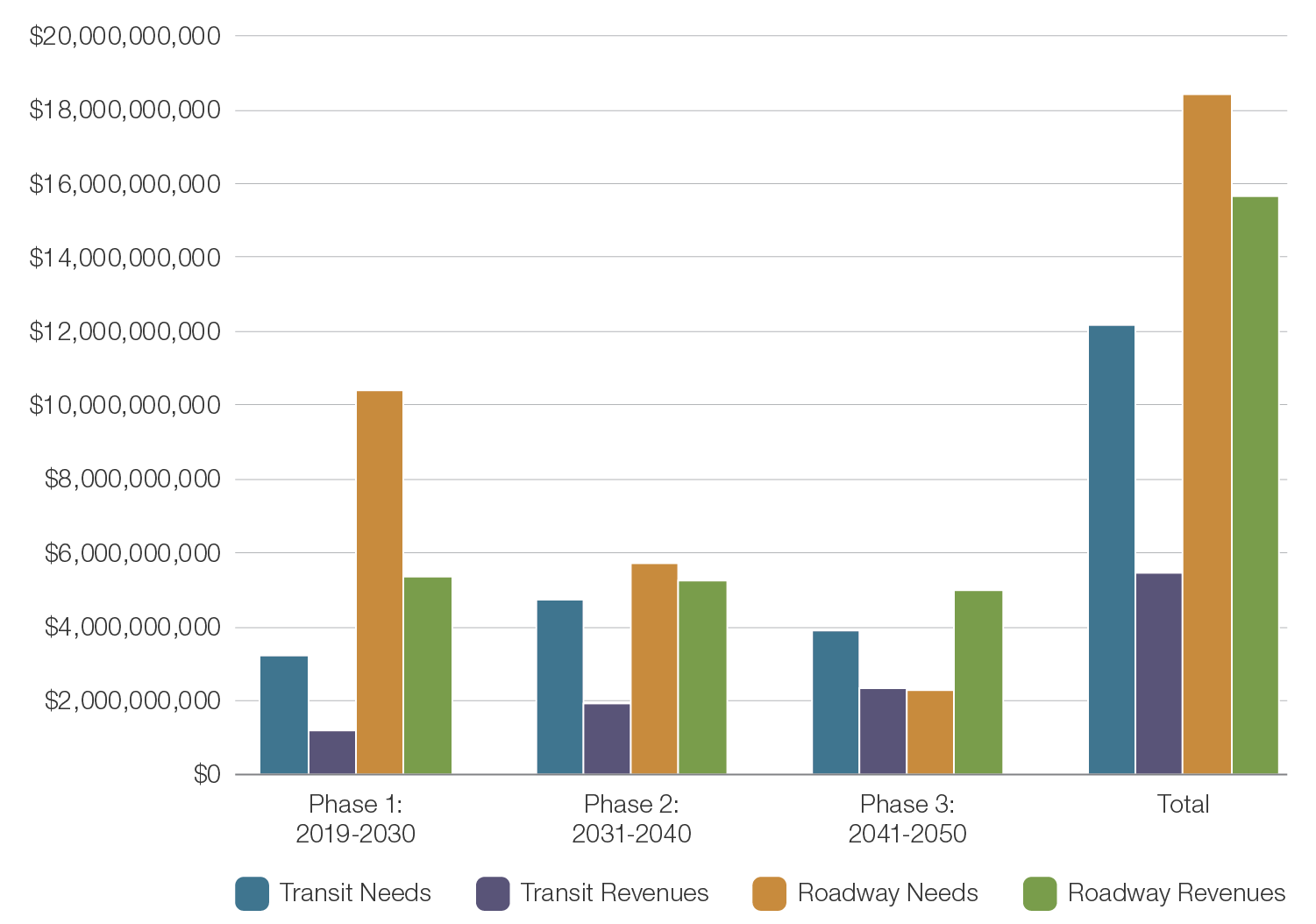
The Regional Transportation Plan includes a financial plan to demonstrate how roadway and transit facilities over the life of the plan will presumably be funded. Long-range plans must also be “fiscally constrained,” meaning that only those new facilities and recommended improvements which could be funded using existing and reasonably anticipated revenue streams are included in the Plan. This practice enables WFRC and its transportation partners to develop plans that are tied to realistic funding mechanisms and also to identify a financial path forward to project implementation.
The 2019-2050 RTP outlines the transportation needs and projected revenues and revenue sources within the WFRC planning area. Between now and 2050, there is an anticipated need of $57.4 billion of funding, in current dollars, to construct, operate, maintain, and preserve necessary roadway and transit projects. There is an estimated $50.4 billion assumed new revenues to pay for these needed projects, creating a funding shortfall of approximately $7.0 billion, as seen in the figure below.

Active transportation facilities are ranked and phased based on need, but are not financially constrained. There is no federal requirement for active transportation projects to identify a funding source at this time. However, WFRC did project potential available revenues based on historic trends sourced from federal, state, and local funds, such as the Transportation Alternatives Program (TAP), the Utah Safe Routes to School program, and the WFRC-administered Surface Transportation Program (STP) and Congestion Mitigation and Air Quality (CMAQ) program. Estimated costs for new active transportation facilities total $461 million between now and 2050.

Revenue sources and assumptions for the 2019-2050 RTP are based on coordination between the Utah Metropolitan Planning Organizations (MPO) (WFRC, Cache MPO, Dixie MPO, and Mountainland Association of Governments (MAG)), the Utah Department of Transportation (UDOT), and the Utah Transit Authority (UTA). This coordination led to the joint Utah’s Unified Transportation Plan financial model that includes estimates of potential revenues based on projected sources for transportation improvements through the year 2050. This financial model was used by each agency when financially constraining their respective plans. Assumptions of new funding sources for transportation projects include additional local option sales taxes, vehicle registration fees, and motor fuel taxes or their equivalent.
All roadway and transit projects in the 2019-2050 Regional Transportation Plan (RTP) have been selected and phased based on need and financial constraints. Costs were estimated for roadway and transit new construction, operations, and maintenance in order to determine which projects could be included in each of the 2019-2050 RTP’s three funded phases. Similar to revenues, the four MPOs, UDOT, and UTA worked together to determine unit costs by facility type.
In comparing necessary transportation costs to revenues, it was determined that there are more needed projects than anticipated revenues can fund. The following figure shows the needs and available revenue by phase for new road and transit projects. To balance costs with revenues, some projects were moved to future phases or placed into the “unfunded” time frame of the RTP, meaning it is not anticipated these projects would be built between now and 2050. Please note that the following graph includes only new transit projects and new transit revenues; the expenses and revenues anticipated to maintain and preserve the existing transit system are not included here, but can be viewed above.

There are other potential funding sources that are available to local communities, but that have not been included in revenue projections for the 2019-2050 RTP. These funding sources may apply on a project-by-project basis, and will require strong coordination among relevant stakeholders. Other potential funding sources include private-public partnerships, private funding, and/or value capture strategies such as tax increment financing/transportation reinvestment zones (TRZs). If these sources become available, they could advance projects by providing funding not yet available and/or replacing public revenues.
For additional information regarding the RTP, please contact Jory Johner.

